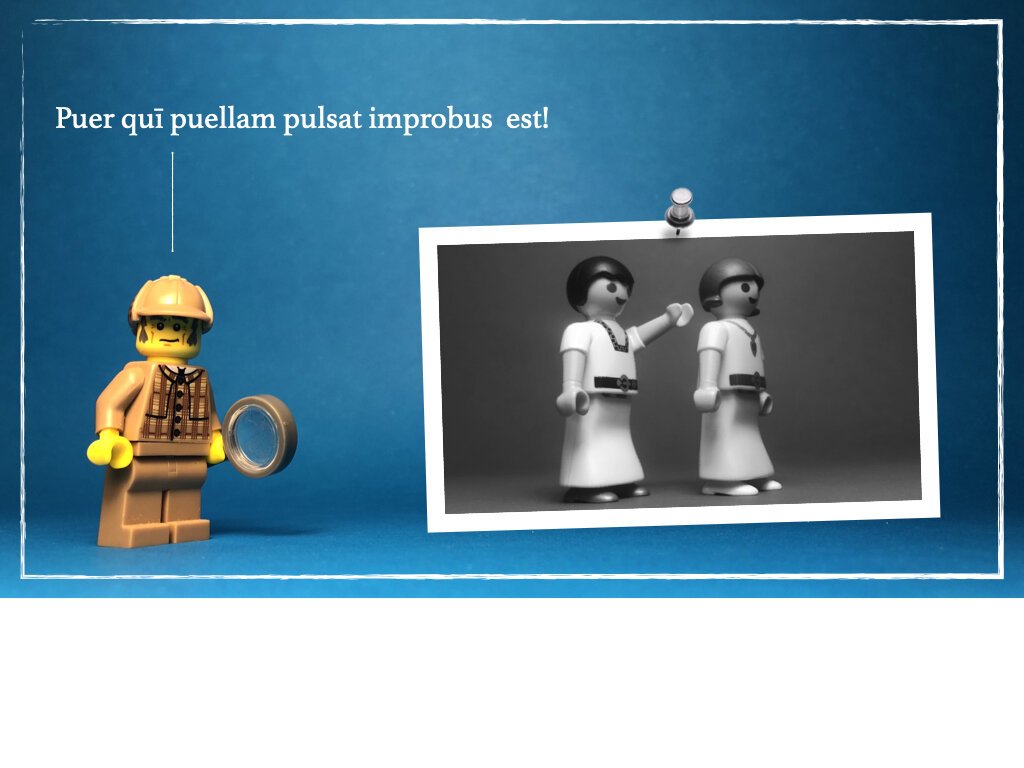We began the lesson with a new game. The room was split into left and right, two competing teams. Each person in the team was allocated a number from 1 to 11 (there were 22 students in the room). One pair came out at a time. I wrote a single word on a small whiteboard, and held it up so that everyone (except the two competitors) could see it. These words were all ones I had introduced signs for (see lesson 20). The students all mimed the words - the first of the two students out the front who guessed it won a point for their team. We played 11 rounds, to give each student a chance to compete.
2. I asked the students to reread the notes on the ‘relative pronoun’ that they had copied into their books (see Lesson 21).
3. I put the third and final part of Capitulum Tertium up on the board, and we read it together. These slides can be accessed here. This part of the chapter contains numerous examples of the relative pronoun. I ask students to translate these examples orally into English. I was able to give most students a sentence to translate - there are that many examples! - and I could feel confidence and understanding increasing as they translated more and more examples. Note: I believe there may well be a downside to this type of translation exercise - a risk that students will also resort to English in their heads whenever they meet a relative pronoun. I decided that in this case, it was worth that risk. But this may only suggest a current inability to come up with a better way.
4. I reminded the students that next lesson we would be meeting in the computer labs to practise on Gimkit.


